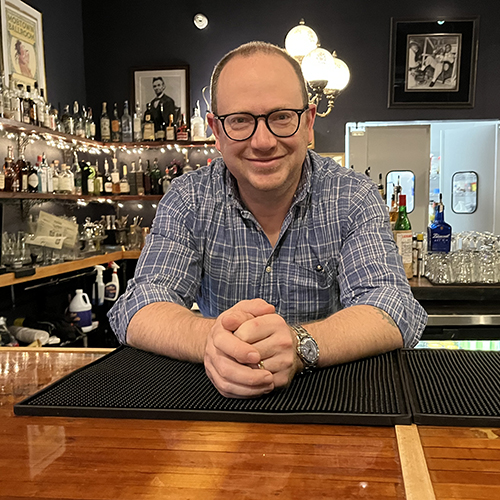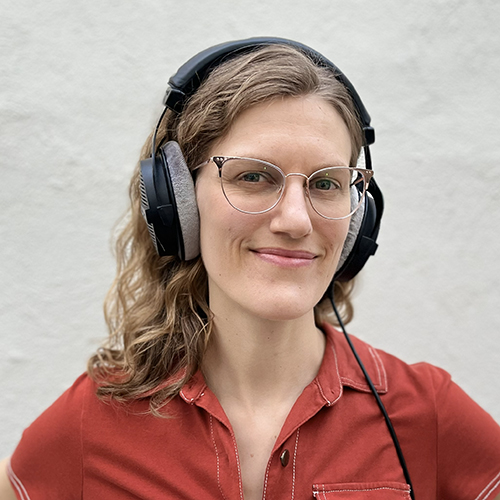When Ed Viesturs moved into his UW dorm room in 1977, his view was a stunner: Mt. Rainier. It was like dangling candy in front of a toddler. Irresistible.
Viesturs was soon climbing Rainier and other local peaks, then tackling tougher climbs in far off lands. By 1990 he had made his first successful ascent of Mt. Everest — one of six summits of that legendary peak. Earlier this year, he made news as the first American — and only the sixth person in history — to successfully summit all 14 of the world’s tallest (8,000+ meter) peaks without supplemental oxygen.

All this from a guy raised in Rockford, Illinois, where the highest objects on the horizon are water towers.
Viesturs credits a book with sparking his interest in climbing. As a teen he read Annapurna, French climber Maurice Herzog’s account of the first ascent of an 8,000-meter peak. “Something intrigued me about going to a huge mountain with a group of friends, working on a team,” says Viesturs. “The challenge intrigued me. I like things that are difficult and long term.”
The University of Washington, surrounded by mountains, seemed the perfect place to explore this new interest. Plus, says Viesturs, “I wanted to be a veterinarian and I knew the UW had a good zoology program.” The view of Rainier from Lander Hall was an unexpected bonus.
“I could see the mountain from my dorm room and it became my focus,” he recalls. “I was maniacal about it. Every weekend, I’d bum a ride or hitchhike, rain or shine, just to be in the mountains.”
Actually, Mt. St. Helens—pre-eruption—was Viesturs’ first major climb. “When I got to the summit, I thought, ‘This is it,’” he recalls. “I was addicted.” By the time Viesturs graduated in 1981 with a B.S. in zoology, he was a seasoned climber. He began working as a guide at Mt. Rainier that summer. (He has now climbed Rainier 194 times.)

Viesturs went on to veterinary school at Washington State University and began working as a veterinarian in 1987, with a flexible schedule that allowed him several months off each year to climb. But after several years of juggling his work and climbing expeditions, climbing won out. He quit his job to pursue his passion full-time.
“I thought it would be for a couple of years,” Viesturs recalls. “I didn’t have sponsors so I continued to work as a guide and carpenter, which gave me the flexibility to come and go on expeditions.”
As Viesturs built his reputation as a world-class climber, he began to attract sponsors. The first was Mountain Hardwear. “It wasn’t a ton of money, but enough to give me the psychological support to think, ‘Maybe I can do this.’ After that, I learned how to market myself.”
It helped that Viesturs made a decision early on to climb without supplemental oxygen. That decision set him apart, since most climbers depend on oxygen as they reach the thin air of very high altitudes, where lack of oxygen can lead to exhaustion and mental lapses. “I find it more interesting and more challenging to go without oxygen,” explains Viesturs. “It becomes more about how I climb to the summit, not if I make it to the summit. You’ve got to be willing to struggle a little more and suffer a little more, but I find it more rewarding to climb a mountain as it is rather than reduce it to my level.”
If that sounds risky, consider another trait that distinguishes Viesturs from other climbers: his caution. Many climbers choose to risk their lives when conditions turn sour as they near a coveted summit, finding it impossible to turn back when the prize is so close, But Viesturs, who has a wife and three kids waiting for him at home, is able to keep sight of the ultimate goal, to get off the mountain alive.

“I think a lot of it has to do with my years as a guide on Rainier,” he says. “As a guide, your job is not just taking people up the mountain, it’s bringing them home. Some people are so desperate to go to the summit that they risk not getting down. It’s like taking a man to the moon and not bringing him back. I’ve been conservative, but also successful. There’s a way to do that. You just have to be patient. I’m willing to sit and wait and wait until conditions are optimal.”
That sounds simple, but practicing such restraint is anything but. Viesturs had to turn back the first time he attempted Everest, after spending months planning and raising funds for the trip. On an expedition on Broad Peak in Pakistan, he and his climbing partner were 100 linear feet from the summit when they made the decision to turn around.
“We couldn’t do a traverse of a slope,” recalls Viesturs. “We discussed it and decided it was too dangerous.”
But shouldn’t coming so close count for something? Evidently not. “It just doesn’t count unless you touch the top. And there are people who watch that sort of thing.”
Viesturs did eventually summit Everest, and Broad Peak too. After he had summited four 8,000-meter peaks, he made a public commitment to reach the other ten. That decision led to more sponsorships, which freed him to do more climbing. “People could follow the story of my quest and sponsors could build a campaign around it,” says Viesturs. “It worked well for everyone.”
By 2005, only one peak remained: Annapurna—the mountain that Viesturs had read about in high school, which first piqued his interest in climbing. He had attempted Annapurna twice before, but had to turn back on both occasions.
“It was appropriate for it to be the last one,” says Viesturs. “It tested all of my abilities. It’s dangerous. Not a friendly place. You’ve got to be very careful with it. I needed everything I had learned over the last 20 years to climb it safely.”

On May 12, Viesturs finally reached Annapurna’s summit—a feat well documented in local and national media. “It was amazing,” he says of the moment he touched the summit. “Not only having climbed Annapurna, but having it be the last piece of the puzzle.”
Not that Viesturs is planning to stop climbing any time soon. Between lecture tours, corporate speaking engagements, and continued work with his sponsors, he is looking forward to his next big adventure.
“I’m so content with what I did, but I’ll have to figure out what’s next,” he says. “There’s a lot of other climbing to be done. I still want adventures. I like having those carrots out there."
More Stories

A Love of Classics and Ballroom
Michael Seguin studied Classics at the UW and now owns Baltimore's Mobtown Ballroom. The two interests, he says, are more connected than they might seem.

Bringing Music to Life Through Audio Engineering
UW School of Music alum Andrea Roberts, an audio engineer, has worked with recording artists in a wide range of genres — including Beyoncé.

A Sports Obsession Inspires a Career
Thuc Nhi Nguyen got her start the UW Daily. Now she's a sports reporter for Los Angeles Times, writing about the Lakers and the Olympics.